Designing a calligraphic writing system for American English that unites phonetic logic with visual design.
Chasa is a phonetic writing system I created to explore what writing could look like if reimagined from first principles. Rather than refining an existing alphabet, this project asked a deeper question: How might we design a system that visually embodies the sounds of speech?
This project was both a linguistic and UX design challenge — integrating research in phonetics, systematic visual logic, human usability, and aesthetic design. It demonstrates my approach to designing from the ground up: investigating new fields of study, structuring complex systems with clarity, and crafting an aesthetic that reinforces meaning.
This video unpacks the thinking behind Chasa: why it looks the way it does, how each choice reflects the nature of sound, and how I built the system from concept to digital form. For those who prefer to read through at their own pace, below is a scrollable explanation of the project in full.

Research for this project covered 2 primary categories: graphemic (the study of writing systems and their fundamental components) and phonetic (the study of the sounds used in language and how we make them).
To begin, I researched the structure of 3 scripts I find particularly beautiful - Arabic, Mongolian, and Sanskrit. All 3 have standard and calligraphic forms. Each gave inspiration on how written language can function - both ergonomically and structurally.



English uses the 26 characters of the Roman alphabet (and combinations of those letters) to convey the sounds of the language, but does so in a complicated and inconsistent way. For example, the following sentence expresses the same sound in 7 different ways:

It turns out that linguists use a system called the International Phonetic Alphabet (IPA) to precisely document the sounds of human language. In this small subset every character represents a single specific human-producable sound:

To demonstrate what that looks like in practice, below is an example of 4 potential interpretations of the same letter configuration: "ough". In the IPA format to the far right each word is made of symbols that convey the precise intended sound. This is the degree of precision I wanted incorporate into Chasa.

40 IPA characters are used to convey the breadth of sounds used in American English. These became the starting point for Chasa, which used a total of 46 (not including character variants).


The other significant research direction was in how sounds are actually produced. I knew I wanted related sounds to be visual depicted in related ways. In order to understand that relationship I studied vowel and consonant mapping - a means of plotting how the mouth produces sound (whether towards the teeth or the back of the throat for example, and the position of the tongue).

Based on my initial research I decided on 5 key constraints that would guide the development of the writing system:





I began ideating with pen and paper - experimenting with different shapes, feeling into which movements were natural and comfortable, and which were most pleasing to the eye.


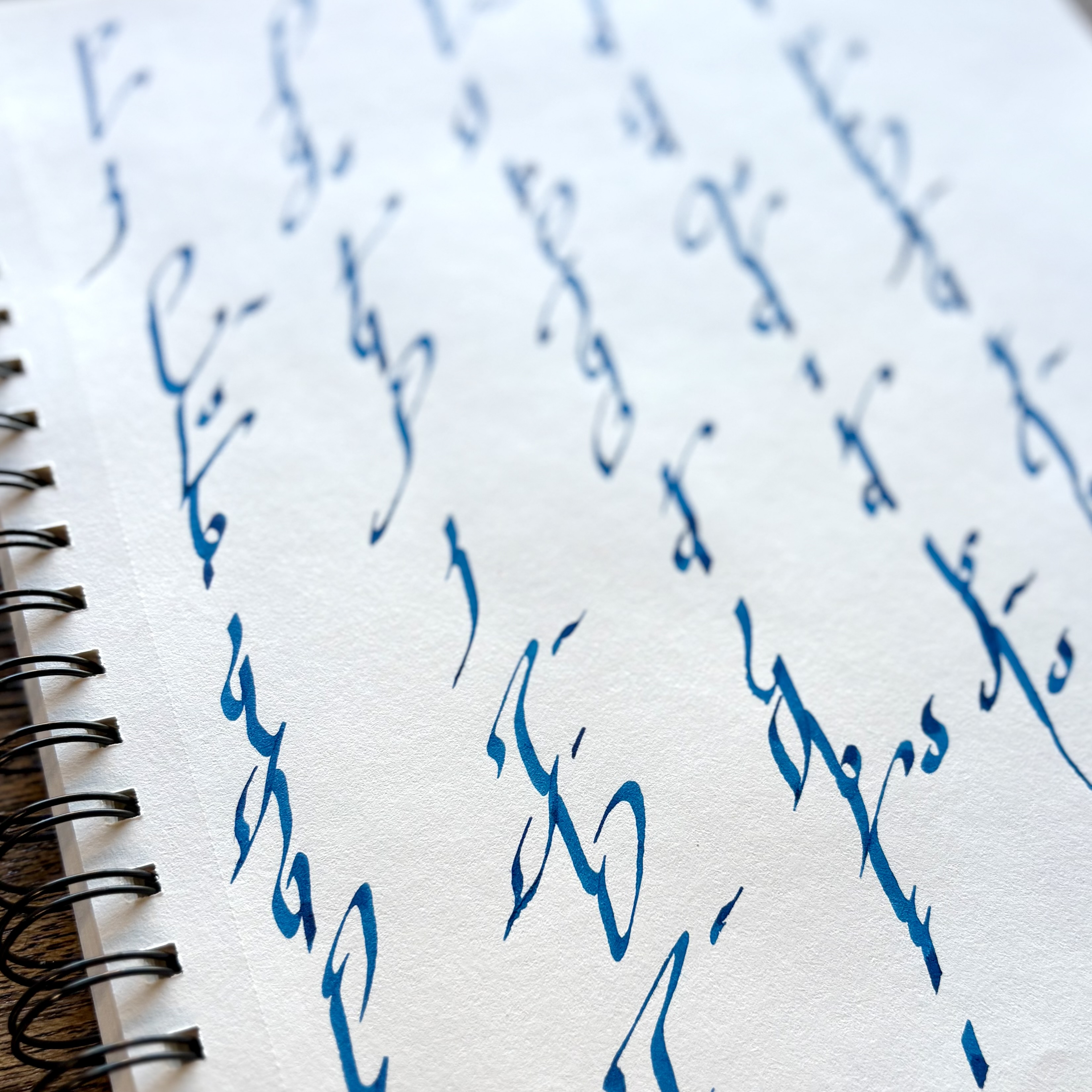
2 early decisions had an outsized impact on the visual development of the system. First, the use of the wide-tipped calligraphic pen. For visual consistency I decided to hold it at a consistent angle (45 degrees) while writing, and that decision impacted the width of stokes and curves in various directions.
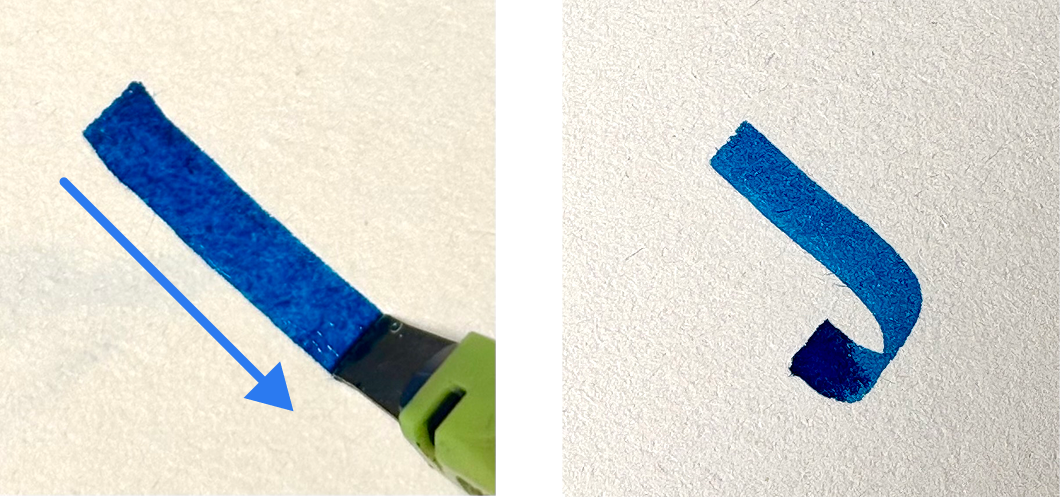
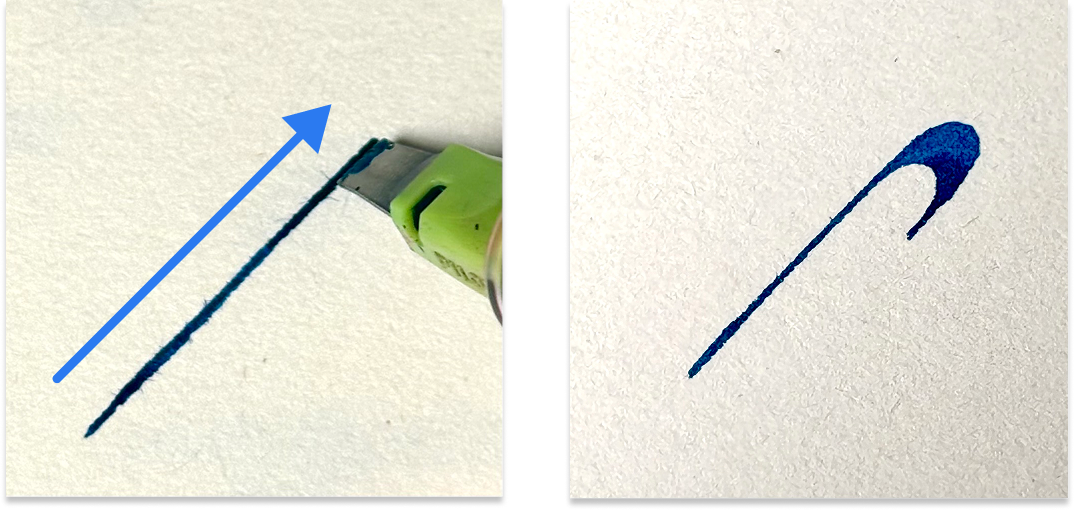
This constraint then helped dictate the way Chasa needed to look. The held angle of the pen led directly to a consistent 45 degree angle being the basis of the character set, ensuring that all characters agreed with each other visually.

The 2nd decision was to have Chasa based off a central baseline. All written systems operate off of a baseline - whether sitting on top of it, operating below it, etc.

I decided that a central baseline was optimal as it would allow the repetition of shapes above and below the line - doubling the potential meaning of limited stylistic choices. In the example below, the same shapes (or very similar) are used on both sides of the line to indicate distinct (but related) sounds.

In order to determine the relation between sounds I explored the sound mapping mentioned earlier. Below are examples of different maps I plotted, along with the sound groupings I determined. For each group I started with a fundamental character shape, then created variations on that theme for the related sounds.

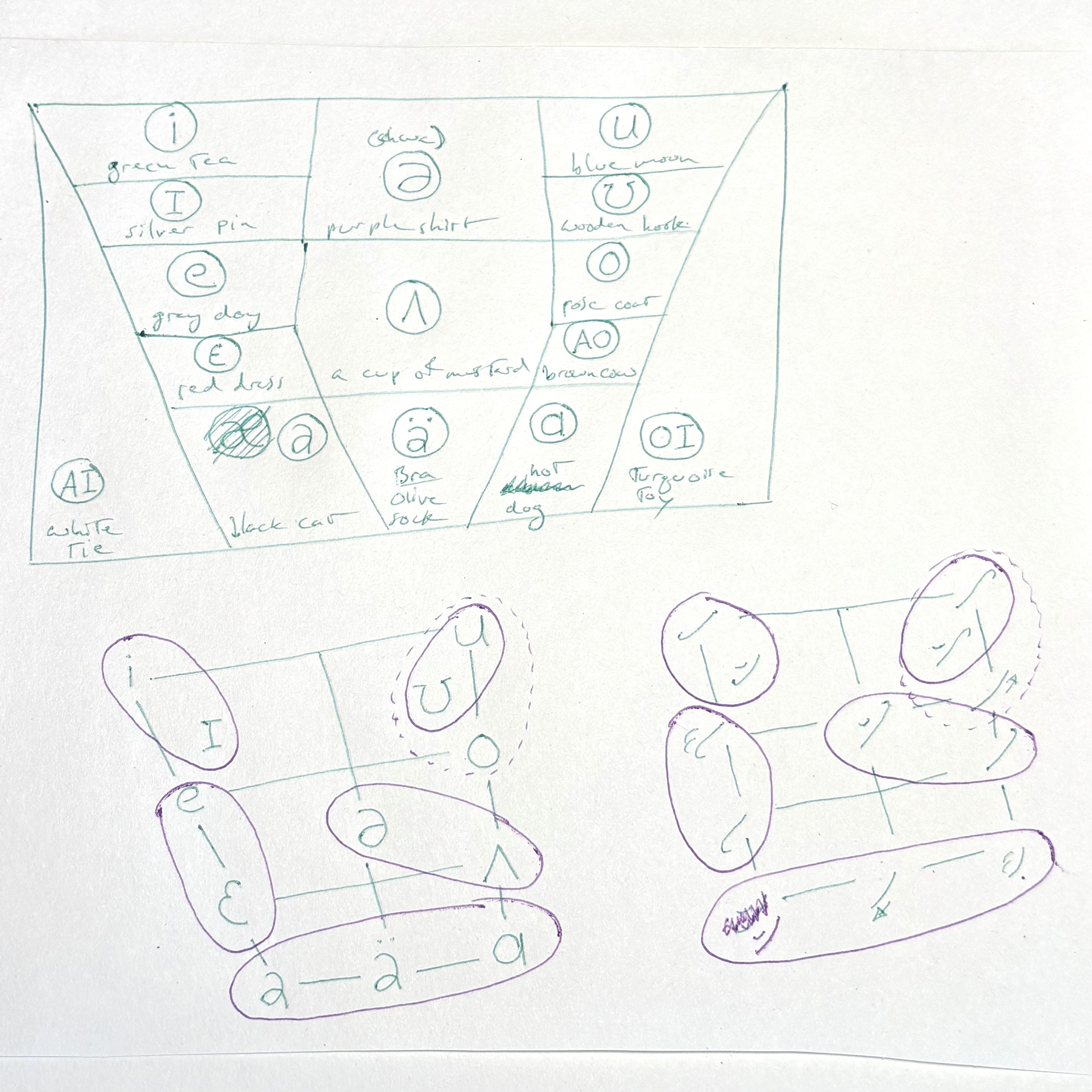

The actual written ideation involved page after page of working through hand movements that were simple, natural and distinct. I then coordinated these through the mapping I'd done. As the full character set developed revisions were required for specific phoneme groups to ensure that they were sufficiently distinct, and also in visual agreement with the other developing characters.


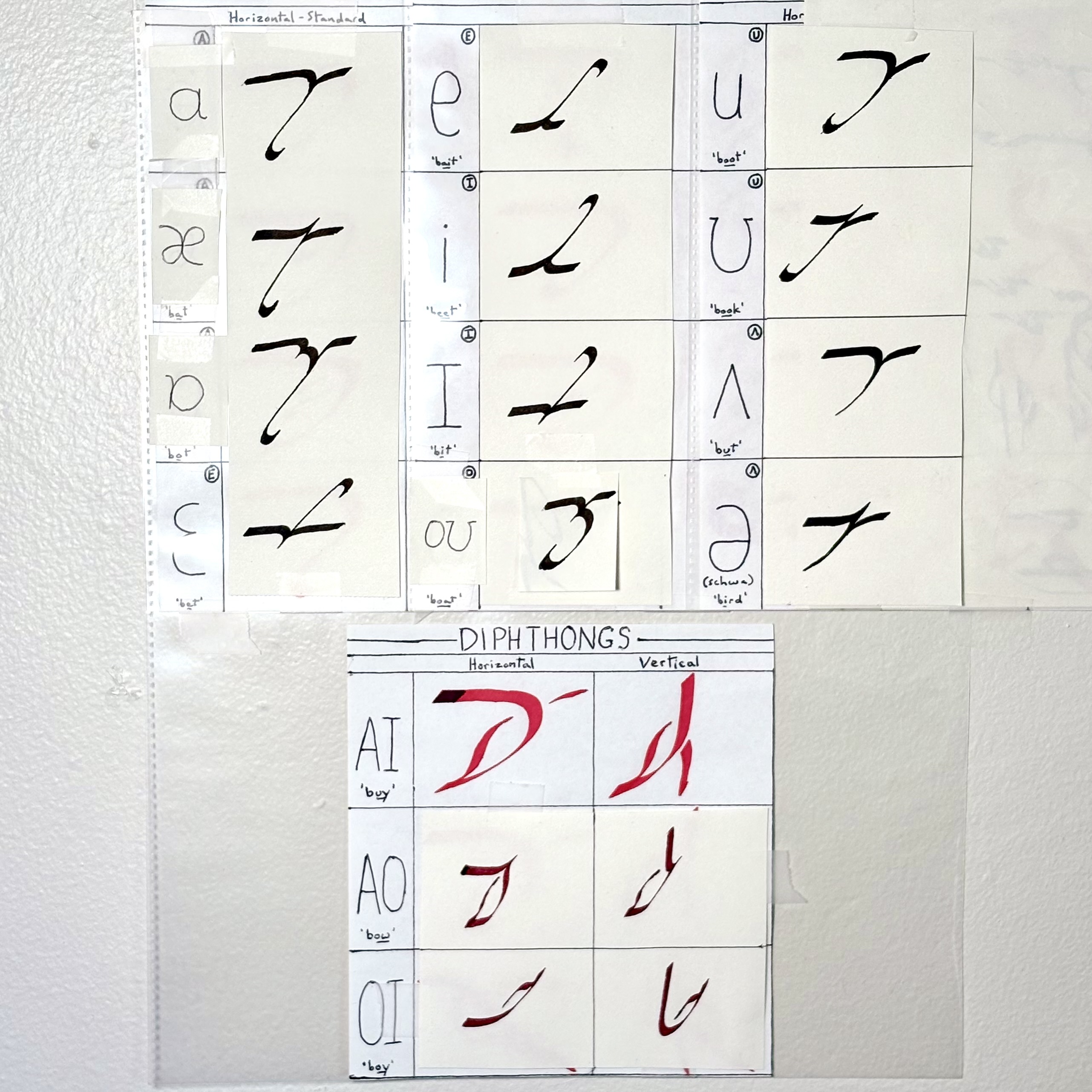
Conversion from the finalized written form to a vectored font was a labor-intensive stage of the project. In order to ensure that the text would feel inherently "right" to the viewer's eye I needed to ensure consistency and symmetry of lines, curves, ratios, etc.

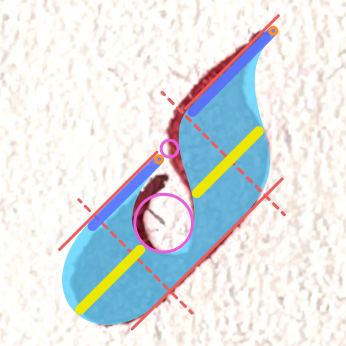
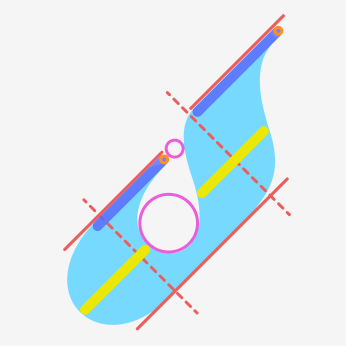

This work was done in Figma. I established set heights and depths across all characters and used the pen tool to create vector forms - often in sections in order to more effectively mirror elements used more than once. After which I collapsed the final form into a single vector image.

Several design criteria were used in the making of each character to ensure stylistic consistency. The 45 degree angle mentioned earlier forms the basis of each stroke. The width of the calligraphic pen (depicted in the file at a 108px rounded rectangle) was used to enforce that all depicted stokes were actually possible. Rounded edges were all made to conform to a 10px circle, and circles of scaled in multiples of that (30px, 60px) were used to establish distances and negative spaces.
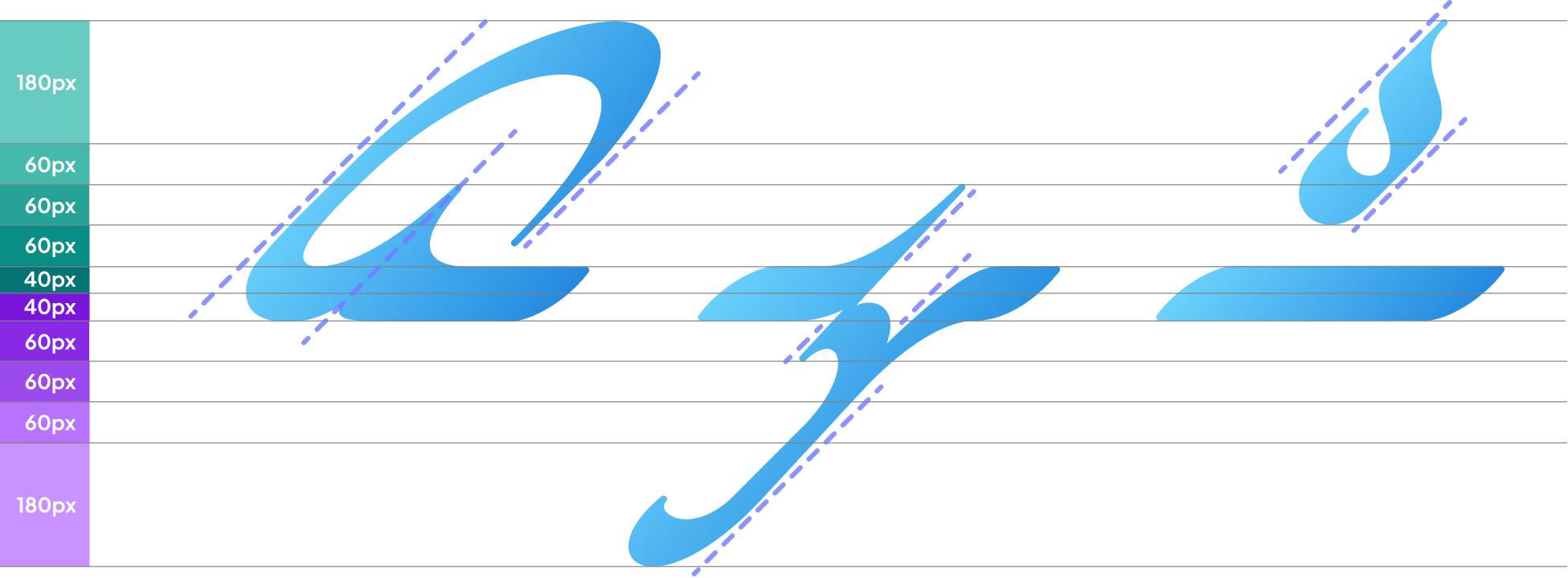
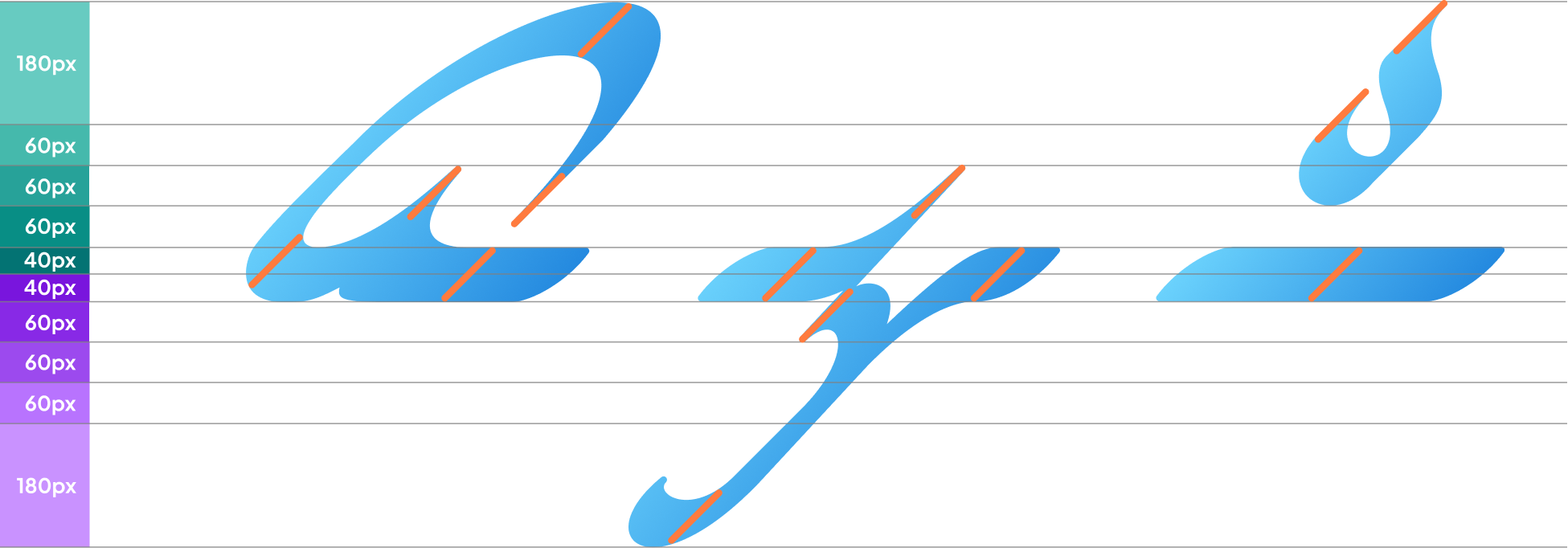

The Chasa character set is divided into phonetic groups - 6 for consonants and 1 for vowels. Each has a visual characteristic that makes it distinct from all other groups, and some have special properties. We'll go through each group in turn.

Sounds made when air is pushed toward the teeth, creating a sharp hissing or buzzing sound.
Rush characters have a curve that touches the baseline, creating an oval.
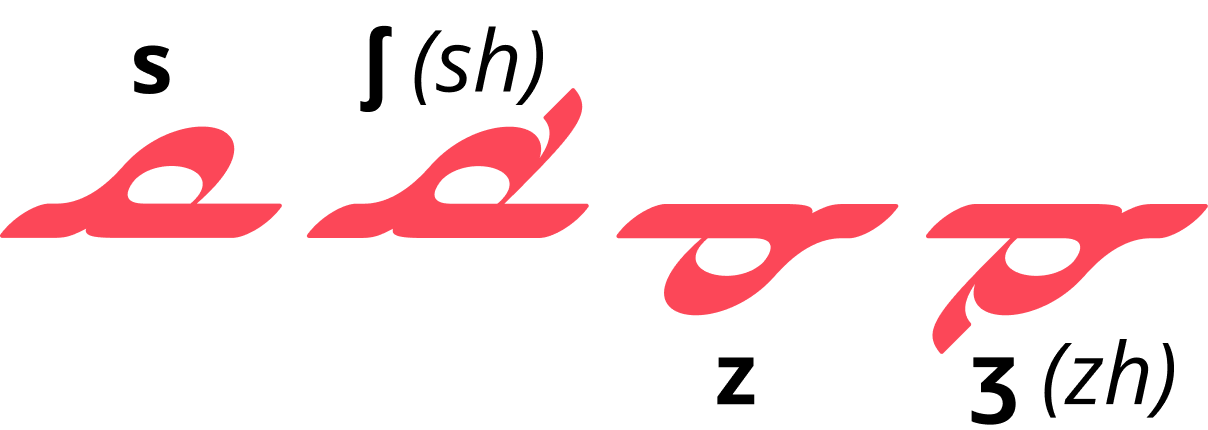
Though not unique to Rushes, we can use them to illustrate the concept of Sister Sounds - pairs that are made the same way in the mouth, differing only by throat vibration. The same shape appears above the line for breath-only sounds (s), and below for vibrating sounds (z). This holds true for every character in the system with a mirrored counterpart on the other side of the baseline.

Sounds made by pushing air through a narrow space, creating gentle friction but no hiss.
Air characters are shown by a simple short stroke or pair of strokes.

Sounds made when air moves smoothly around or past the tongue with little blockage — often flowing into nearby vowels.
Flow characters take the form of a curved stroke that floats above the baseline (or another character).

Flows can be written above other characters to form combined sounds—those produced simultaneously in speech. In these combinations, the base character is read first, then modified by the Flow above it.
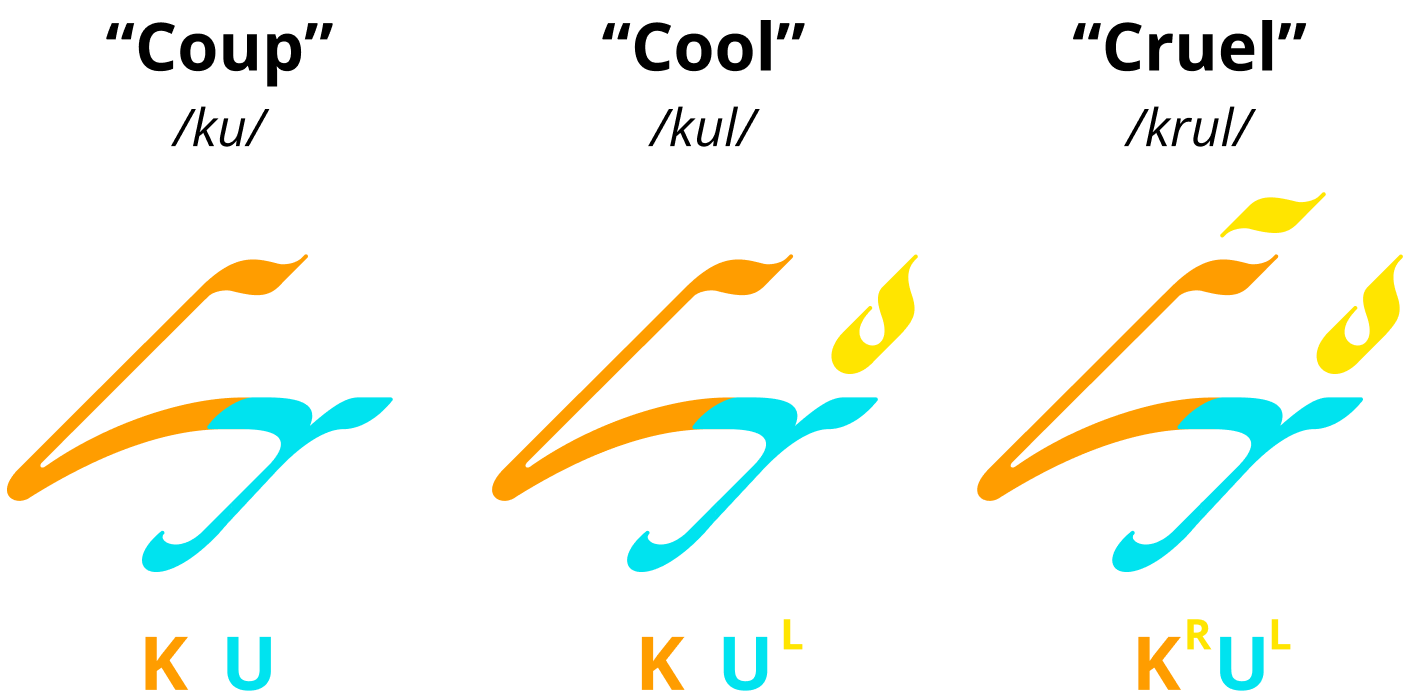
Below are examples of the 2 forms a Flow character can take - combined or stand-alone. The first 2 'r' characters represent distinct 'r' sounds, so are stand-alone. The 'er' at the end of the word is pronounced a single sound, so is written in combined form.
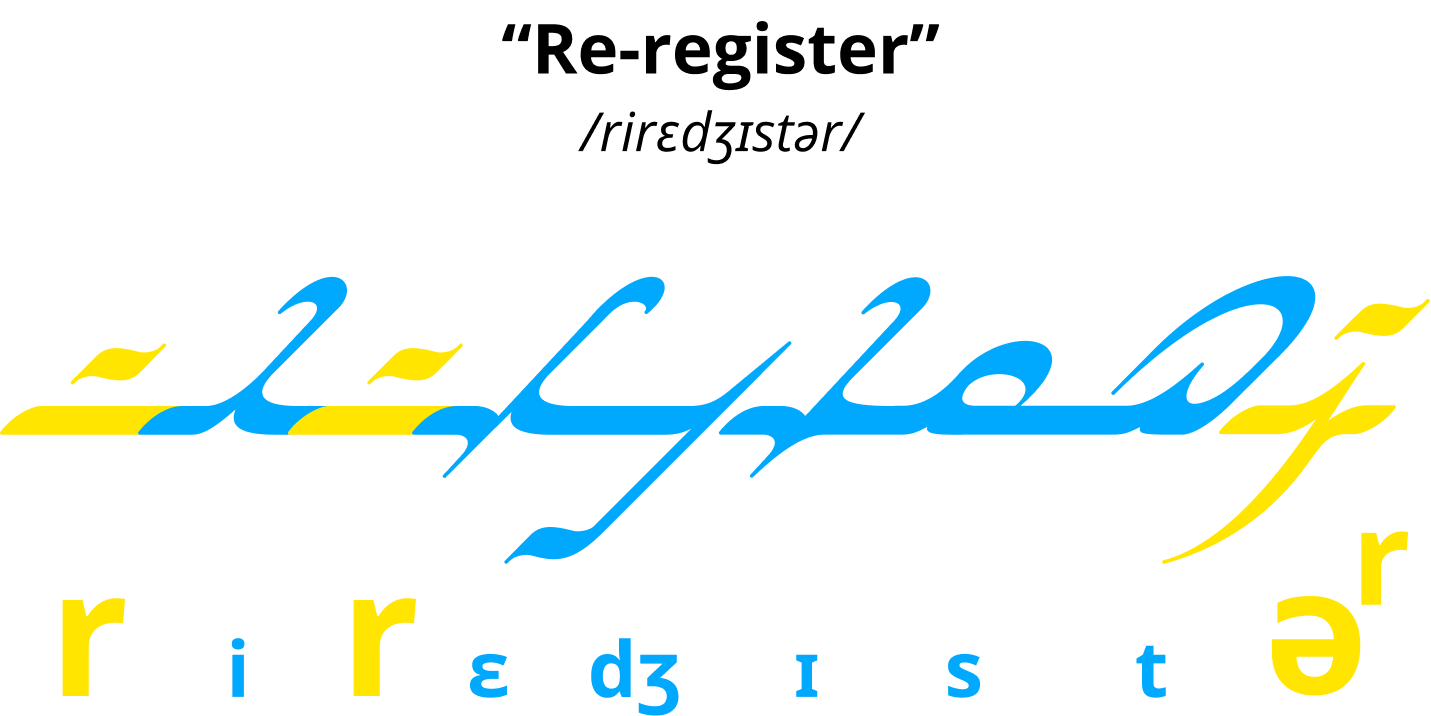
Sounds made when air passes through the nose instead of the mouth.
Nasal characters are shown as a curve that bridges a break in the baseline. Note: this is the only category in which all characters exist on one side of the baseline, as all its sounds require throat vibration.

Sounds made when air is stopped completely, then released in a small burst.
Hit characters are tall (reaching the maximum possible character height) and completely break the baseline. This is a visual indicator of the pause-and-burst characteristic of the sound made by this group.
Unique property: As Hits break the baseline, they can form the beginning or the end of a segment of sound. Because of this, each character has 2 forms.

To demonstrate this in practice, we'll look at the word "popcorn". Here we can see both forms of the 'p' character being used, as well as the clear visual break between the sound segments "pop" and "corn".

Part of the visual logic of Hits is to visually demonstrate where the breath is held and released. In the below example, both forms of the 'b' character are used for the word "caboose", leading to different pronunciations.
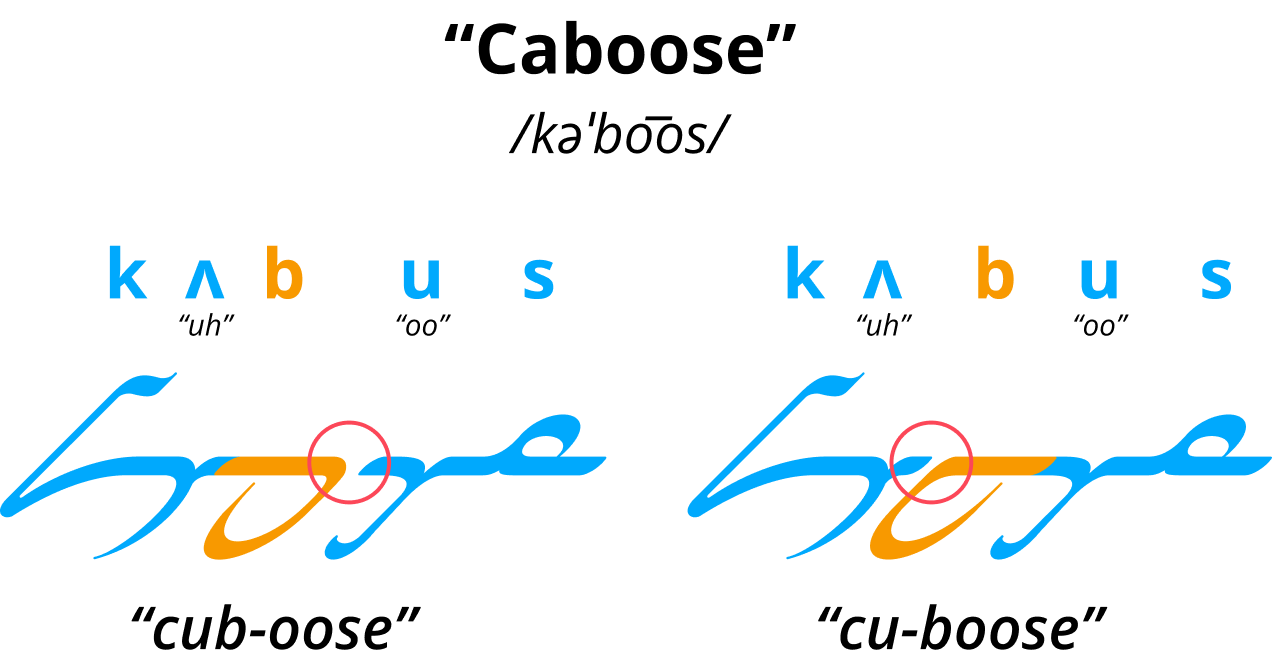
Plurals are a category unique to Chasa. They're formed when specific Hits are combined with an 's' character (which may actually be a 'z' sound depending on the word). These sounds are made nearly at the same time in the mouth and so are represented by a single character.

In keeping with the system’s visual logic, Plural characters combine the forms of the two characters they represent. The single stroke of “t” remains present in its Plural form, but is shifted slightly to prevent visual crowding.

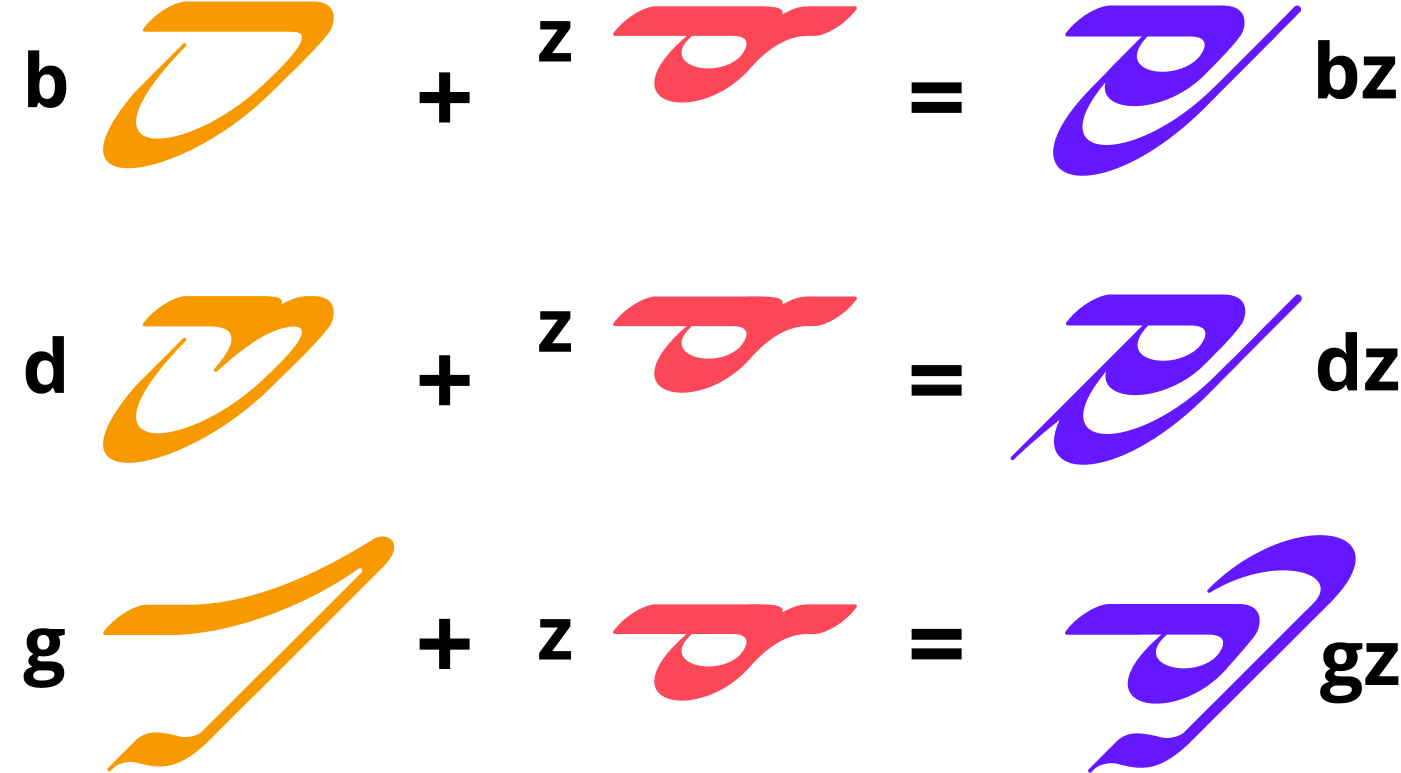
Made when air flows out freely with nothing blocking it.
Vowels have a long 'tail' shape that extends to the maximum distance from the baseline.

Returning to the concept of vowel mapping, each vowel subgroup (e.g., “A, E, I, O, U”) begins with a base shape that is then modified to form additional characters, as illustrated in the two subgroup examples below.

Dipthongs are sounds that begin with one vowel and transition to another. To indicate this visually, each dipthong is depicted with the standard vowel tail, then a second tail that curves back toward the baseline.
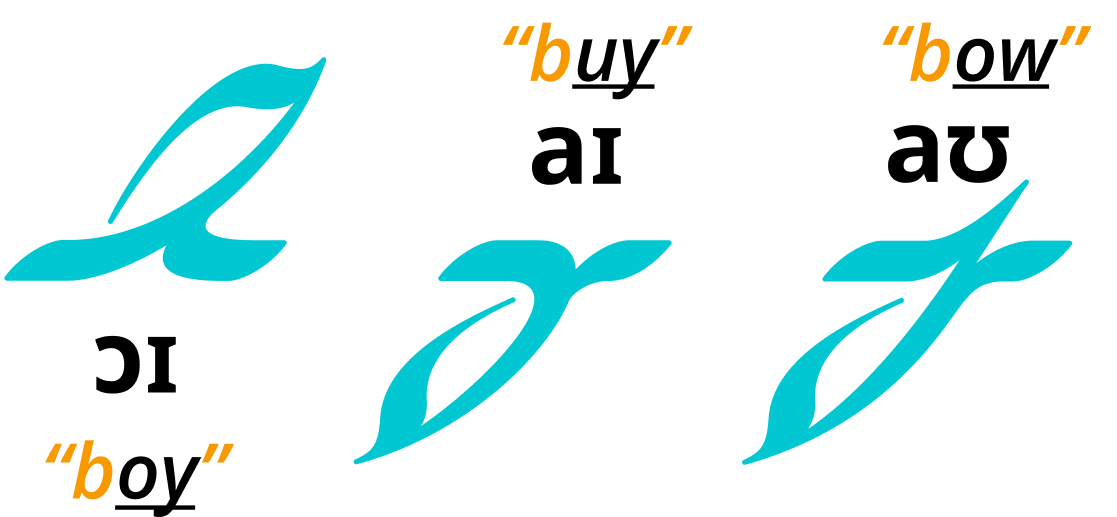
The final design parameter was that Chasa be able to be written both horizontally and vertically. The system is designed so that this conversion can be done simply and intuitively.


Strokes extending away from the baseline are mirrored consistently between orientations. The upper field in horizontal form maps to the right field in vertical form, and the lower field maps to the left.

All characters fall into one of three categories, each of which converts differently:
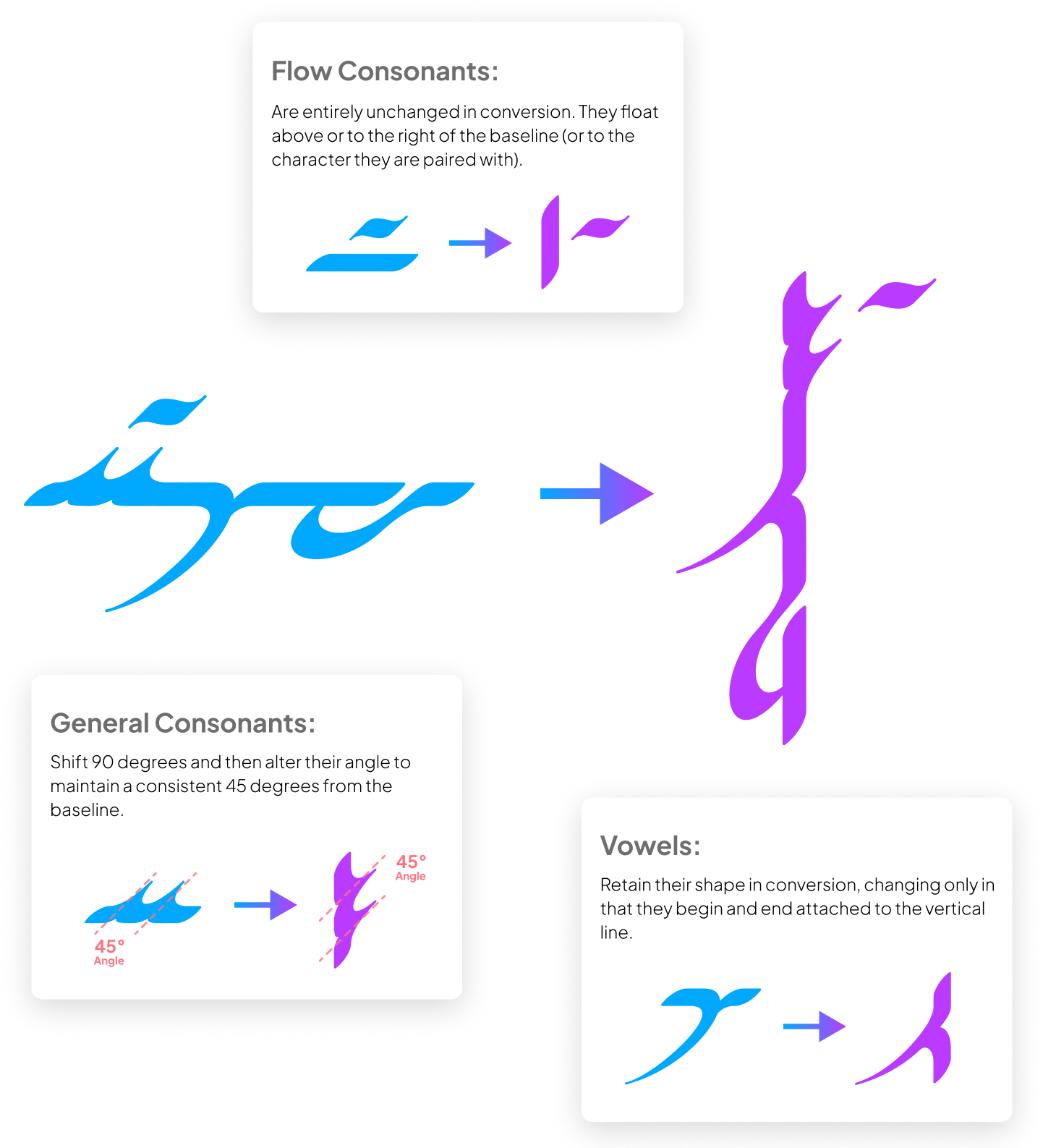
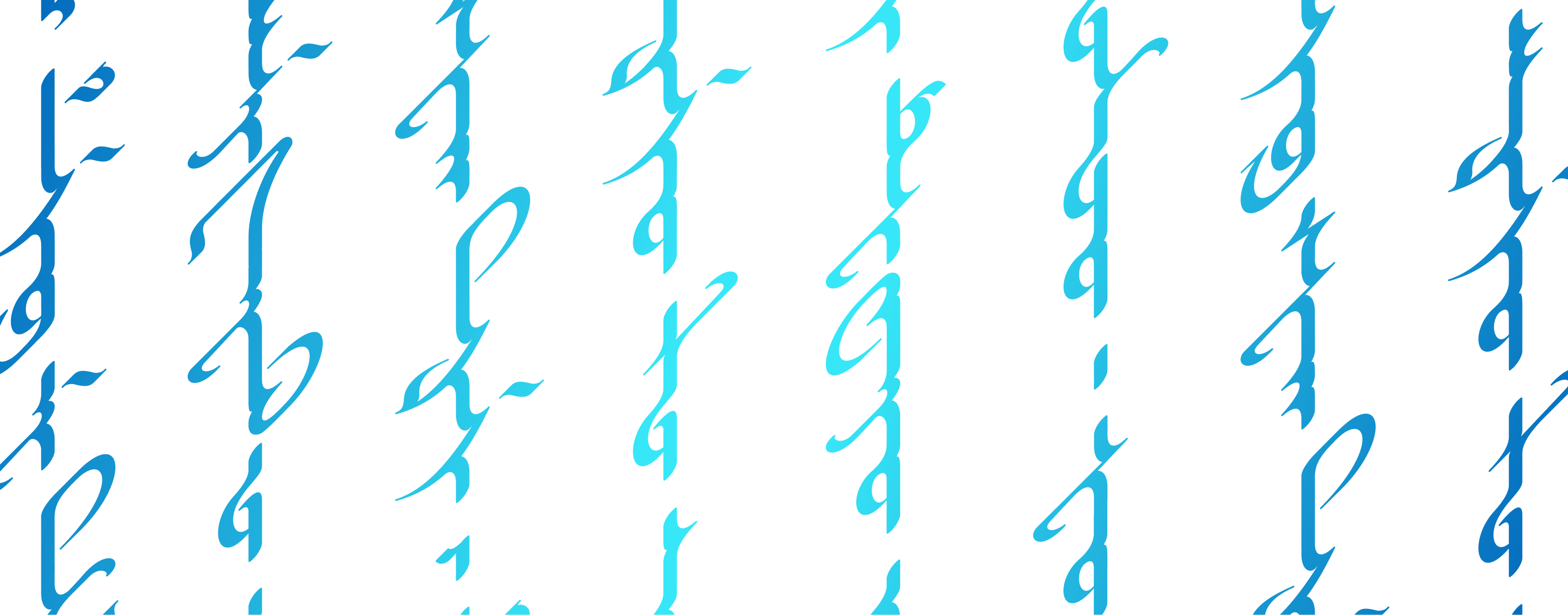
And that’s the system in full. Chasa grew from a desire to make the sounds of language visible - using design to shape a script that feels both intuitive and beautiful. For me, it stands at the intersection of design thinking, linguistic structure, and aesthetic expression - a system where sound finds form.
